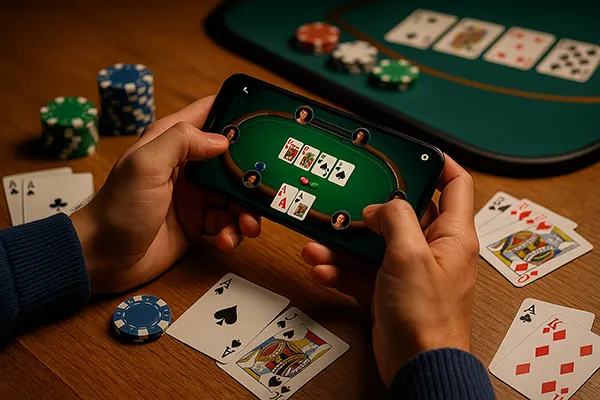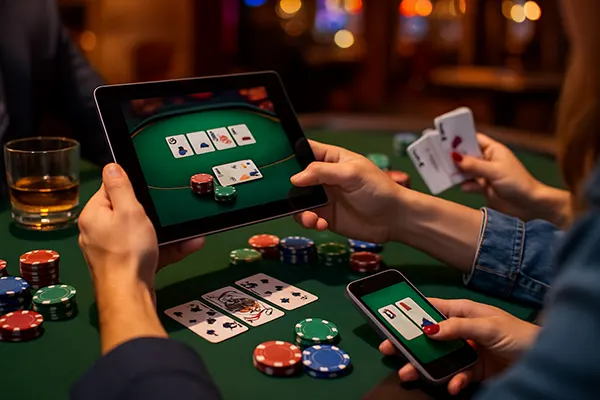
Competing with Change: How Poker and Blackjack Strategies Adapt in the Mobile Gaming Era
Over the last decade, the landscape of card gaming has shifted dramatically. Mobile technology has not only brought poker and blackjack to players’ fingertips but has also reshaped the way strategies are formed, tested, and refined. With rapid gameplay, constant connectivity, and access to global opponents, players are compelled to rethink traditional approaches in order to remain competitive. This evolution demands an understanding of both classic principles and new dynamics driven by digital environments.
Mobile Accessibility and its Impact on Strategy
The availability of poker and blackjack on smartphones has changed when and how people play. Sessions can now happen during commutes, breaks, or late-night hours, making time management a key factor. The flexibility means players can engage more often, but it also increases the risk of impulsive decisions if discipline is not maintained.
Shorter play sessions have influenced strategies, particularly in blackjack, where players now focus on quick, high-value hands rather than long, drawn-out sessions. This change is also visible in poker, where the pace of mobile tournaments often demands tighter decision-making and a readiness to adapt faster to opponents’ styles.
Mobile interfaces have introduced simplified controls and statistical tracking tools. Players who use these features effectively can analyse hand histories, identify mistakes, and refine strategies more efficiently, giving them an edge over those relying solely on instinct.
The Rise of Data-Driven Play
One of the most significant developments in mobile poker and blackjack is the integration of real-time analytics. Apps can provide data on winning percentages, opponent tendencies, and optimal betting patterns, empowering players to make decisions grounded in probability rather than guesswork.
In poker, hand trackers and HUD-like tools available within legal frameworks give insights into betting behaviour over time. For blackjack, apps offering card-counting practice modes help maintain accuracy even in digital environments, where decks are shuffled more frequently.
By combining traditional card sense with data interpretation, players are now able to adapt mid-game, counteract aggressive opponents, and exploit predictable patterns with greater precision than ever before.
Adapting Classic Techniques for a Mobile Environment
Classic strategies in poker, such as position play, bluffing frequency, and pot control, remain relevant but require adjustments for mobile play. The faster pace often means that nuanced reads based on extended observation are harder to achieve, so efficiency in information gathering becomes vital.
For blackjack, strategies like basic chart adherence and card counting still form the foundation, but mobile play often introduces variations in rules and payout structures. Players who fail to adjust to these subtle differences risk losing their advantage, even if their fundamental approach is sound.
Another adaptation lies in bankroll management. Because mobile play is accessible around the clock, there is a heightened need for setting strict limits to avoid overextending during frequent short sessions. Tracking software can be used to reinforce these limits and alert players when thresholds are reached.
Strategic Adjustments for Multi-Table and Multi-Deck Play
Many mobile poker apps allow multi-tabling, enabling players to participate in several games at once. While this can increase profit potential, it also requires a more rigid strategic framework to handle decisions quickly without losing focus on each table’s dynamics.
Blackjack players face similar adjustments when mobile versions feature continuous shuffling machines or multiple decks. This diminishes the effectiveness of card counting, pushing players towards alternative advantage techniques like shuffle tracking or betting pattern exploitation.
Ultimately, success in both games under these conditions comes down to balancing speed with accuracy — a challenge that can only be met with deliberate practice and disciplined decision-making.

Psychological and Behavioural Shifts in Mobile Play
The psychological environment of mobile play is distinct from that of physical or desktop gaming. Without the presence of physical chips, dealer interaction, or table atmosphere, emotional cues and tells are reduced, forcing players to find alternative ways to read opponents.
Distraction is another factor. Mobile players may be interrupted by notifications, conversations, or environmental noise, all of which can impact focus and lead to costly mistakes. Adopting pre-game rituals and finding quiet playing environments can mitigate these risks.
Furthermore, the convenience of mobile gaming can lead to increased play frequency, which may be beneficial for skill improvement but also poses the risk of overplaying. Successful players actively monitor their mental state and recognise when fatigue or frustration is influencing their decisions.
Maintaining Competitive Edge in 2025 and Beyond
As mobile technology advances, AI opponents, more sophisticated game interfaces, and enhanced security features will shape the way poker and blackjack are played. Players who embrace these changes early are likely to gain a significant edge.
Continuous education is vital. Access to digital training resources, live coaching sessions, and AI-assisted analysis tools allows players to stay ahead of evolving trends. Those who invest in learning new strategies while refining their core skills will maintain long-term competitiveness.
Finally, adaptability remains the cornerstone of success. Whether facing unfamiliar rule variations, faster formats, or data-rich opponents, the players who can think critically and adjust in real time will continue to thrive in the mobile gaming era.
